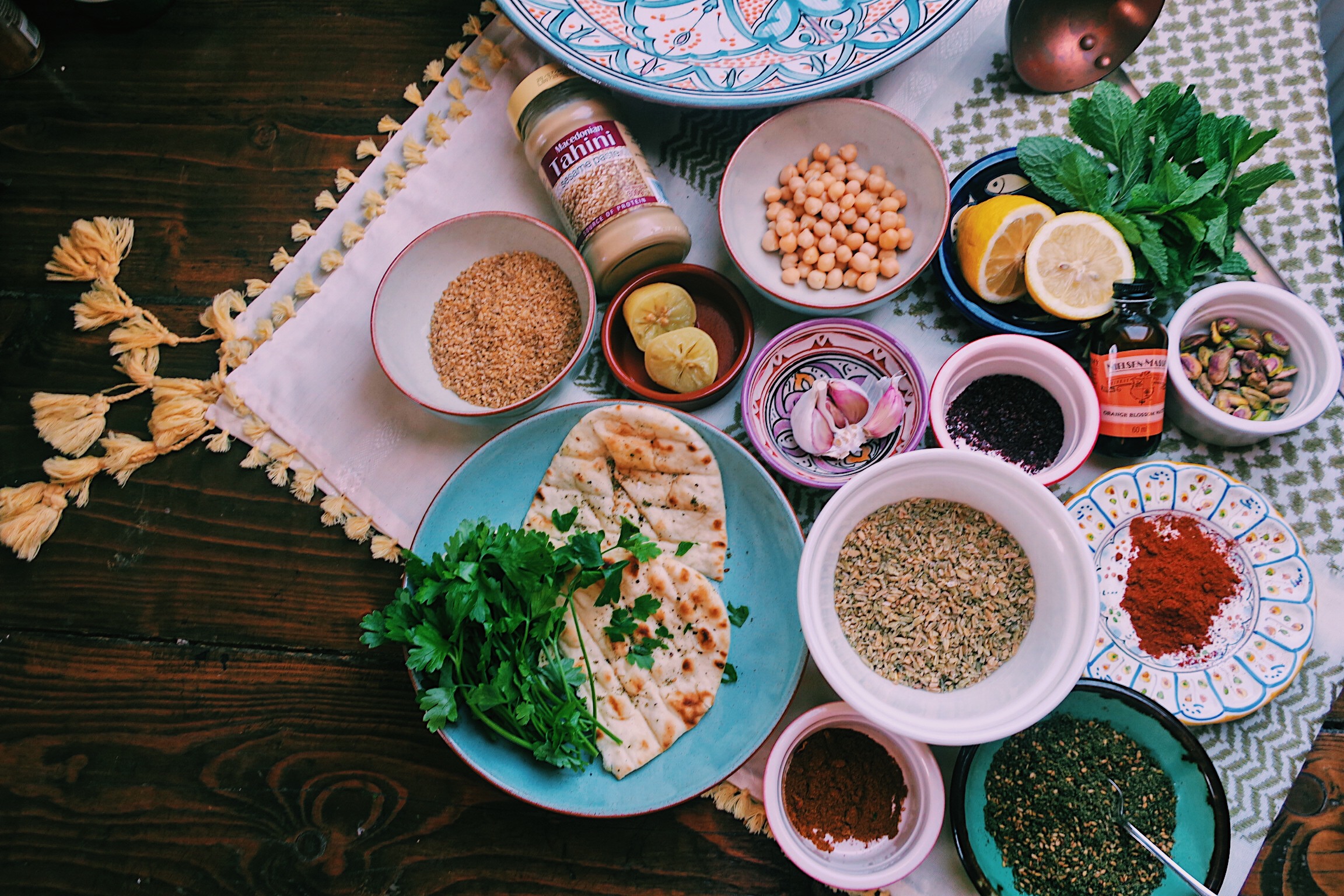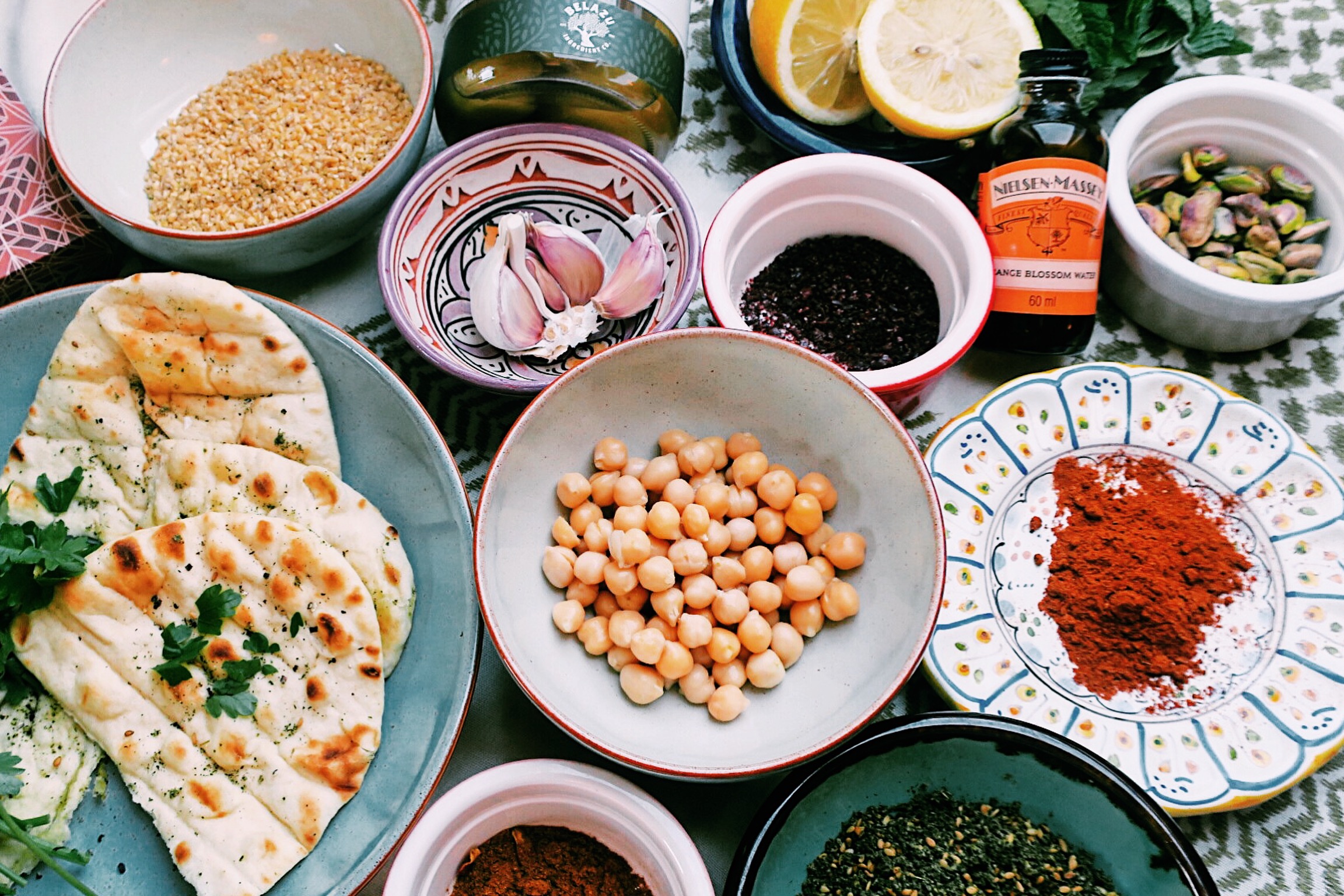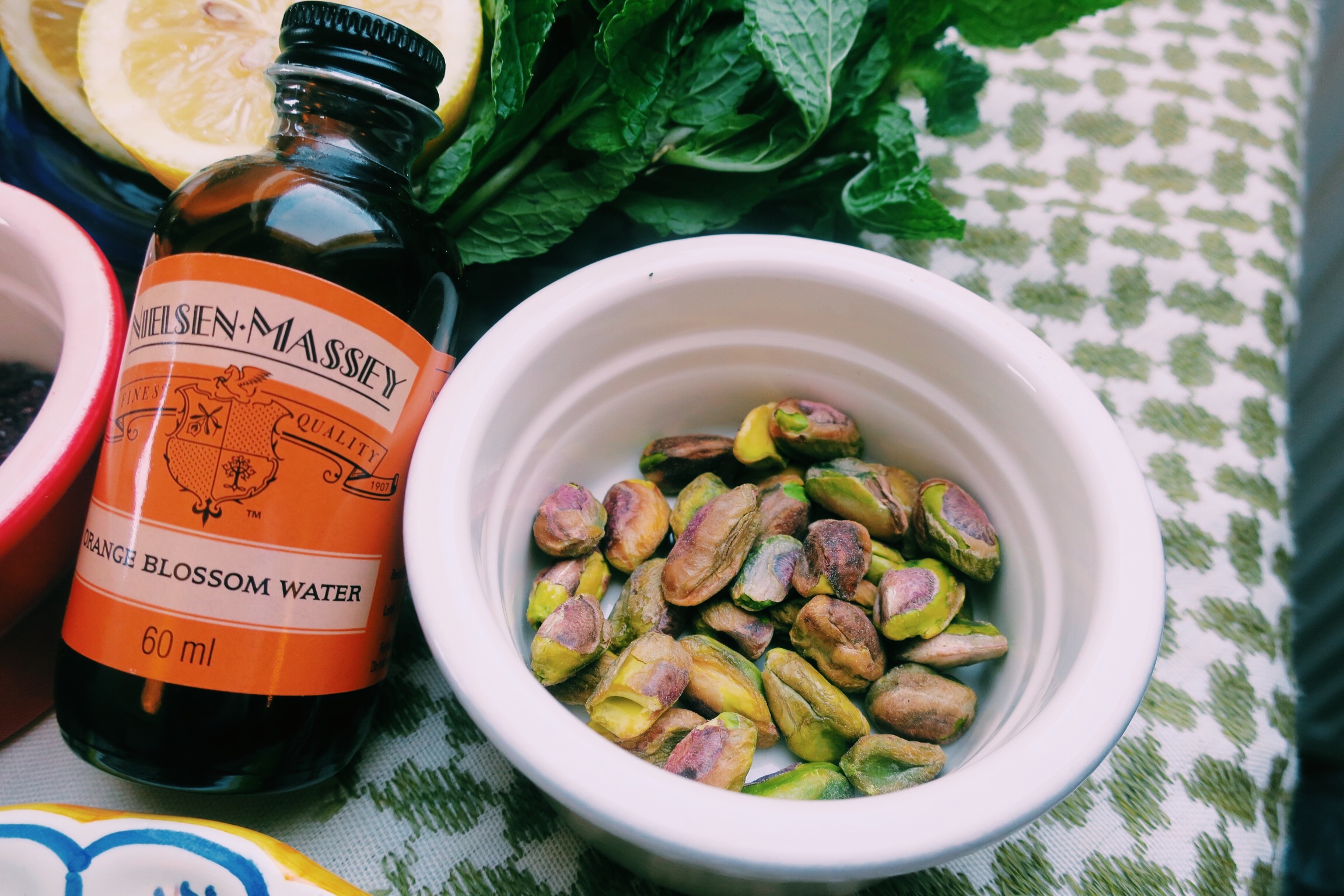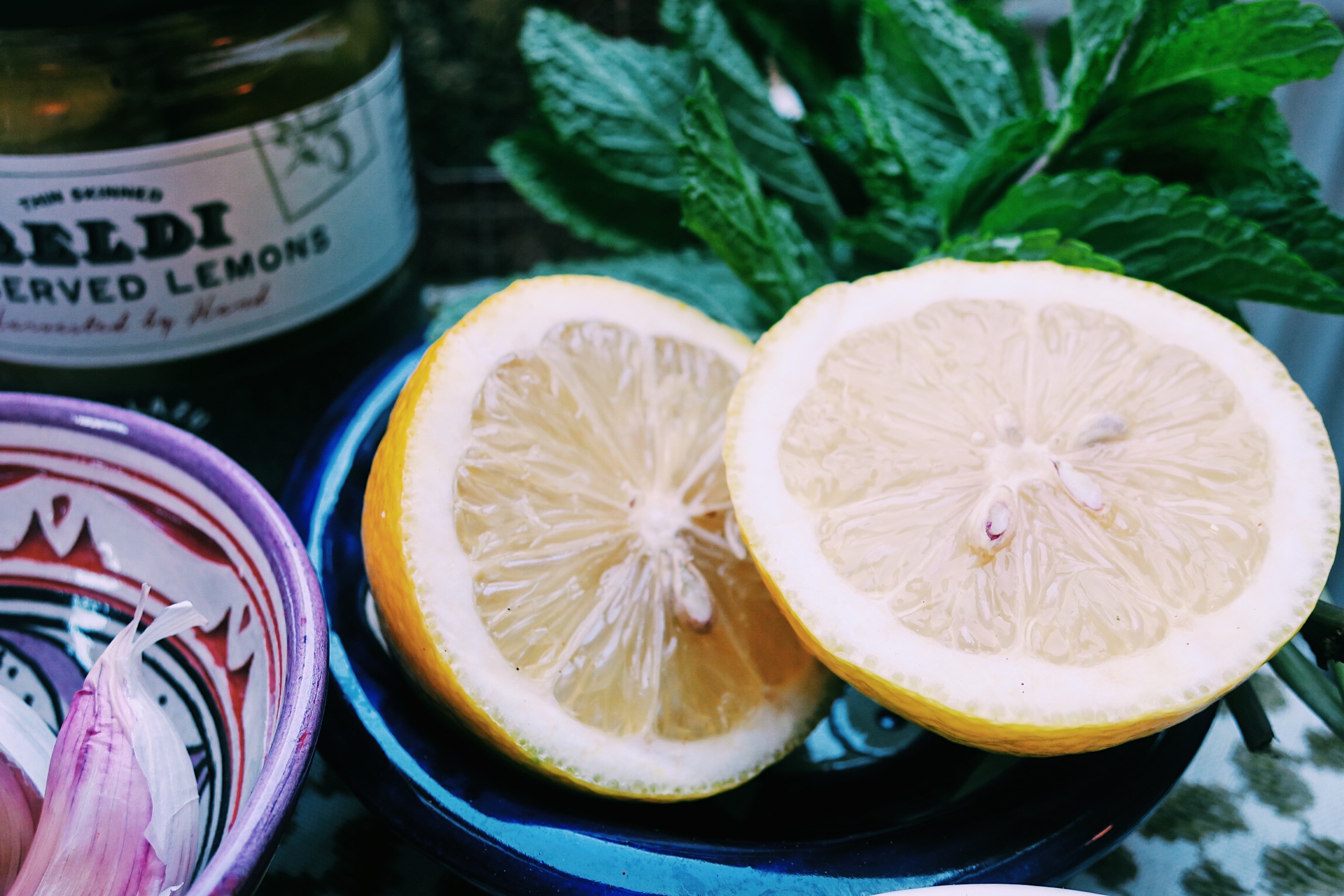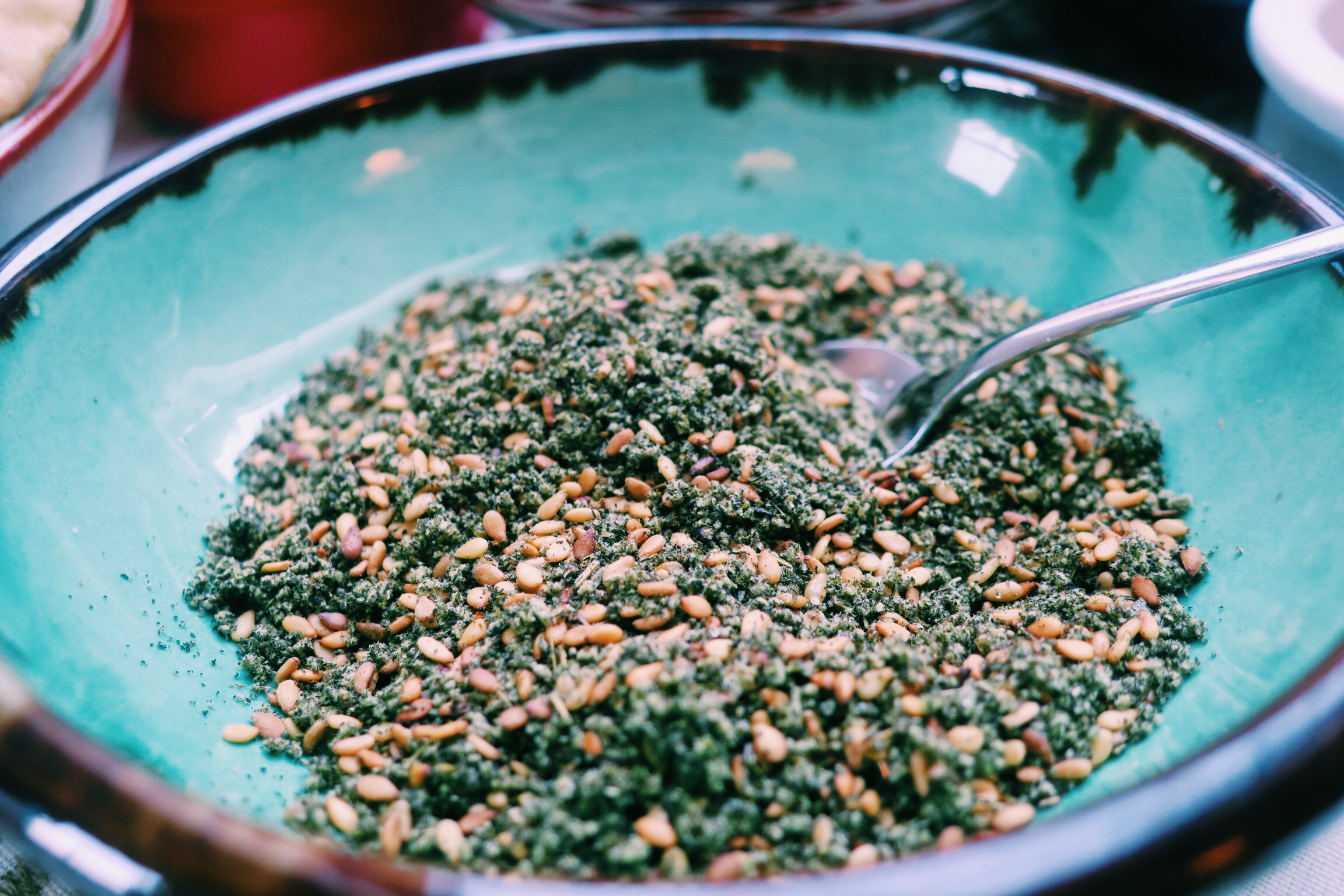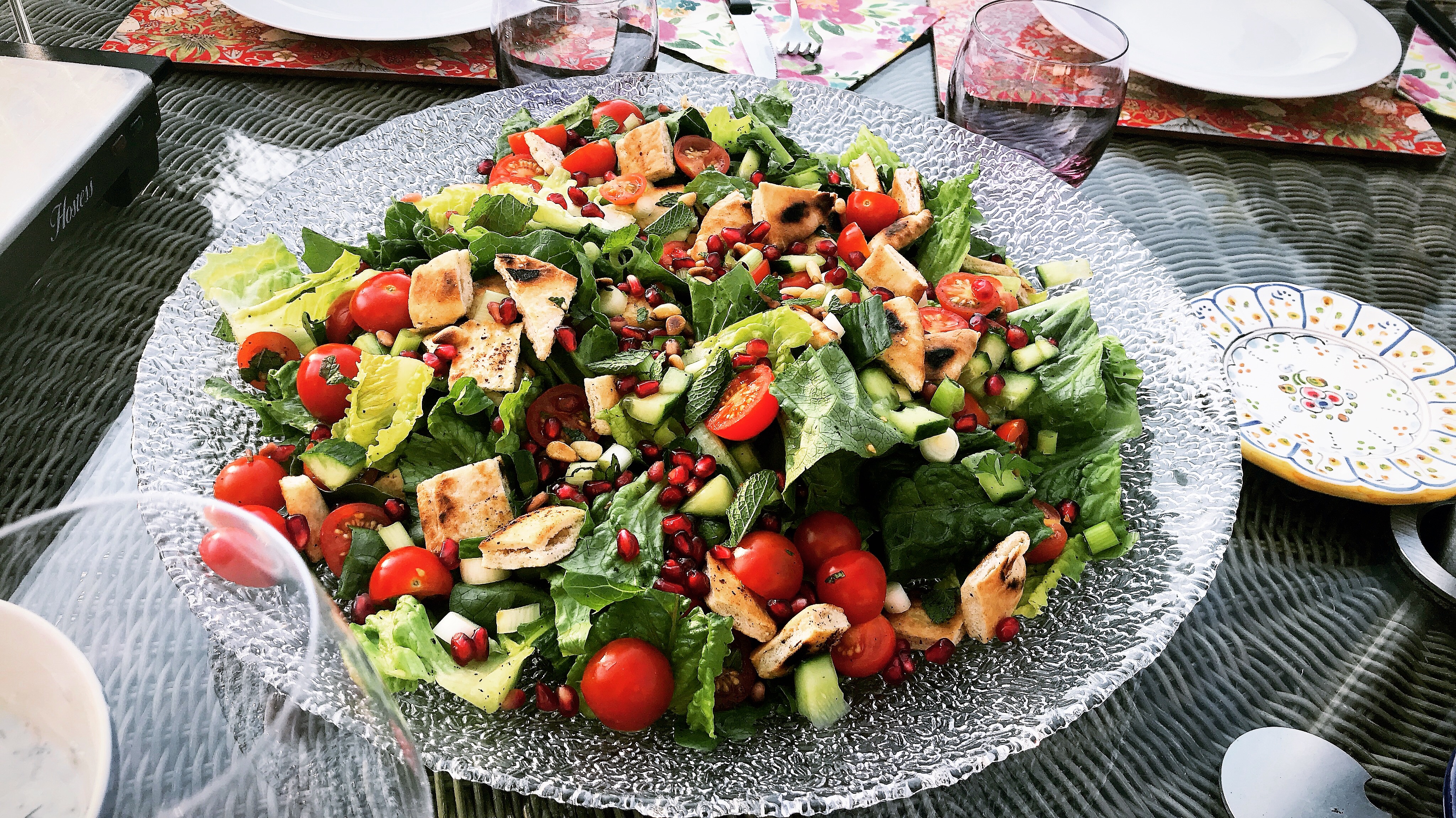Middle Eastern food seduces many food-lovers with the vibrancy and colour of its cuisine in addition to its fragrant flavours and complex textures. However, before you too delve head-first into creating your own dishes, you’ll want to stock up on the classic ingredients that go into Middle Eastern food, of which there are quite a few. For me, Middle Eastern food not only reflects the fertility of the region but also the strength and tenacity of its people, who continue to produce wonderful food in times of hardship and even conflict, when supplies and resources are heartbreakingly restricted. Mainly female heads of the household must tenaciously rely on preserving natural ingredients grown locally, which are then stored in an extensive larder until required and combined with spices with marvellous resourcefulness. Undoubtedly there exists a joyful satisfaction of whipping up something magical from very little indeed. As a Middle Eastern food-obsessed blogger, I too like to keep my cupboards stocked up with the basics, ready to spontaneously whip up sensational dishes for friends and family.
Middle Eastern food is all about sharing food and precious moments together as friends and family.
Picture each member of the family, young or old, clambering to dip their flatbread into the juices of the roast lamb, cooked and buried beneath the soil according to Bedouin tradition. Imagine the henna-dyed fingers of Grandma, wrinkled with the hardships and wisdom of life, gently offering delicate pastries and sweet tea before a wedding celebration. In many ways, food becomes a personal account of one’s family and upbringing, and is therefore deeply entrenched in memory. There is an Arabic poem, written by the acclaimed Mahmoud Darwish, that goes ‘I long for my mother’s bread and her coffee’. This expression is regularly used by Arabs to express their homesickness, longing or perhaps alienation, as food is transformed into fragments of memory; memory of family, home and homeland.
To help you start your own Middle Eastern pantry, we’ve put together this list of 12 essential ingredients that are used in many Middle Eastern recipes:
The Basics
Flatbreads خبز
Flatbreads are a familiar face in Middle Eastern cuisine and can be combined with simple and complex flavours. One of my favourite ways to eat flatbreads is simply dipping them in olive oil and nutty za’atar (see below in the Spice Cupboard!). Believe it or not, in Middle Eastern culture, flatbreads entirely replace the need for cutlery. While some in the ‘West’ might think this uncivilised, this view is quite short-sighted – every single dish, whether it be hummus or maklouba (succulent lamb buried under rice infused with cardamom) is scooped up with delicately flaky, grilled flatbreads which absorb the delicate juices of any food – divine. Apart from consuming an awful lot of carbs, I don’t have any qualms with this strategy of eating and neither should you.
Freekeh فريكة
Freekeh is baby green wheat which is roasted on an open fire and rubbed to give it an earthy, nutty and smoky flavour and plenty of texture to bite into. In my humble opinion, freekeh is most delicious mixed with sautéed onions, toasted pine nuts and sweet spices, and stuffed into a whole roast chicken to create a wholesome family meal with plenty of portions to spare.
Bulgur wheat برغل
Bulgur wheat is featured on the list owing to the fact it is one of the main ingredients in the wonderful salad that is tabbouleh, made of finely chopped parsley, tomatoes, fresh mint and humble bulgur. I love how tabbouleh adds a hint of freshness to any a spread of mezze plates, whilst being unsuspectingly filling owing to the little gems of bulgur.
Chickpeas حبوب الحمص
One word, hummus. Hummus is perhaps the most recognisable and well-loved of Middle Eastern cuisine in Europe and chickpeas are the humble main ingredient. They are completely transformed when blended and combined with sticky, thick tahini in addition to garlic, lemon juice and olive oil. I must stress that homemade hummus is a triumph compared to bought-hummus, which can be dry and very unremarkable. I love to whip up my own hummus to have with lunches. I like drizzling it with plenty of extra-virgin olive oil, sprinkling on Moroccan smoked paprika, toasted pine nuts and chopped flat-leaf parsley. I even add a few pomegranate seeds if I’m feeling luxurious or wanting to impress at a dinner party. Chickpeas are also used within stews and tagines, helping to make dishes heartier and more substantial.
Pistachios فستق
In Syria and other regions across the Middle East, pistachio nuts feature more often in sweet desserts than in savoury entrée dishes, however they do occasionally feature in rice dishes such as jewelled saffron rice served with lamb or chicken. Pistachio nuts are commonly used as fillings in filo pastry, in desserts such honey-dripped baklawa which are stuffed with a mixture of pistachio and other nuts, or alternatively as toppings for decorative purposes on cakes or rose-infused rice pudding.
Orange blossom water ماء زهر البرتقال
Orange blossom water is made from the distilled blossoms of orange trees. This fragrant ingredient can breathe light into desserts such as rice puddings, baklava and even indulgent citrus-based cakes.
Preserved lemons – الليمون المحفوظ
Preserved lemons have a wonderfully pungent flavour that is both sharp, citrussy and a little tart. They are often added to tagines and salad dishes to add a fantastic zesty kick. It’s quite simple to make your own preserved lemons as they are simply stuffed with salt, placed in a jar and preserved in lemon juice for at least a month. However, if you’d rather not wait, you can find them at quite a few supermarkets. I love stuffing fish with preserved lemons, particularly rainbow trout. You slice open the fish and fill it with a mixture of coriander, spring onions, garlic, the lemons (chopped) and toasted pine nuts. This marinade gave a zesty aromatic flavour to the fish whilst it bakes in the oven and perfectly balances the natural oiliness of the trout, whilst the toasted nuts are a little crunchy surprise when tucking in.
Tahini طحينة
Tahini is a sticky, thick paste made out of ground sesame seeds and is one of the main ingredients in our most favourite mezze dip, hummus. It has a distinct toasted and nutty flavour which complements many dip dishes but it can also be used in many deserts. One of the most famous Middle Eastern sweets and one with plenty of history is halwa, which is made out of tahini mixed with hot sugar syrup and ground pistachios or other nuts to create a deliciously flaky, diabetes-inducing confection craved throughout the Arab World.
The Spice Cupboard
Za’atar – زعتر
Za’atar is an intensely aromatic spice that has a gorgeous nutty taste and adds beautiful flavour to any dish. It is traditionally made with dried herbs including thyme and oregano, and is wonderful with flatbreads or in marinades for fish or meat dishes. Personally, I love glossing sliced aubergines with olive oil and a sprinkling of za’atar then baking them in the oven until slightly caramelized to make a delicious vegetarian dish, perfect when drizzled with a tahini dressing and topped with flatleaf parsley and toasted pine nuts.
Sumac – سماق
Sumac is without a doubt the most beautiful and unique of all Middle Eastern spices, it is a deep purple powder that glistens like ground rubies. It is made from crushed red berries from the sumac bush, which is native to the Middle East. So far as taste, sumac has a tangy flavour which is a little less tart than lemon juice. Sumac is perfect sprinkled in the oily dressing for a crunchy and vibrant fattoush salad. Sumac is a key ingredient in this well-loved Syrian salad as its slight sour and tart taste compliments the lemon in the dressing while contrasting to the plump sweetness of pomegranate seeds and the freshness of cucumber. Sumac is also very visually striking when sprinkled over leafy green vegetables. For this reason, although sumac is used in rubs and marinades for meat and fish, it is at its best when sprinkled on top of dishes before serving, whether they be salads or labneh mezze dishes with chilli and preserved lemons.
Baharat – بهارات
The name Baharat in Arabic literally means spices. It is a popular, all-purpose spice blend used across the Middle East which is made up of ground allspice, black peppercorns, cinnamon, coriander seeds, cloves, nutmeg and paprika all gloriously ground together. You can, of course create this at home by purchasing the individual spices and grinding them down with a pestle and mortar, however for those of us searching for a fuss-free, low faff option, Bart’s do a gorgeous little tin of Baharat which is sold at supermarkets.
Ras al hanout رأس الحانوت
This familiar Moroccan spice is named after its fine quality and complexity which trumps other spices. In Arabic, ras al hanout means ‘top of the shelf’ in a merchant’s shop. This precious, fragrant spice traditionally consists of over 60 ingredients including nutmeg, allspice, coriander and cinnamon. However, each blend is completely distinct in its combination of ingredients. Ras al hanout is truly an ode to Morocco’s rich heritage and its historical interactions with other cultures, as a number of spices are not originally sourced in Morocco – some blends might include fennel seeds and other more exotic ingredients such as galangal. One of my most loved gifts for Christmas last year was a small jar of this spice from Harrods. The orange, brown spice emits a dusty fragrance that transports me to the medinas of North Africa and the dried rose petals buried in the sand-like powder look like pink jewels. Ras al hanout is commonly used in tagines, whether they be with lamb, chicken, oxtail or vegetarian (consisting of butternut squash and chickpeas), giving them all a unique sweet/savoury flavour which is so quintessential of Moroccan cuisine. My favourite Moroccan recipe to make for a big group of friends is Seffa, which is a chicken casserole made of tender chicken thighs, stock, spices, fresh herbs and juicy raisins, served on fluffy couscous.
So there you have it – 12 essential ingredients to start your own Middle Eastern pantry! We hope this list has inspired to experiment with Middle Eastern cooking. To help you continue your Middle Eastern food adventure, we’re going to be reviewing a number of recipe books from the region throughout the year – so stock up the cupboard and stay tuned!
Throughout this list we’ve included links to Amazon, where you can buy many of these cupboard essentials. Where possible, we’ve tried to list suppliers from the region so you can support regional businesses!
 Lydia Daniels is a graduate linguist specialising in Spanish and Arabic. Now based in London, Lydia works in digital marketing while blogging on the side at The Foody Girl. She delights in whipping up sensational dishes, spending lazy afternoons sketching, hiking in mountains and immersing herself in new cultures. Her adventures have taken her to many enchanting cities so far; Valencia, Madrid, Barcelona, Amman, Rabat.
Lydia Daniels is a graduate linguist specialising in Spanish and Arabic. Now based in London, Lydia works in digital marketing while blogging on the side at The Foody Girl. She delights in whipping up sensational dishes, spending lazy afternoons sketching, hiking in mountains and immersing herself in new cultures. Her adventures have taken her to many enchanting cities so far; Valencia, Madrid, Barcelona, Amman, Rabat.
All the photos in this post are Lydia’s own.


